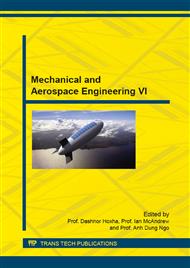p.367
p.372
p.377
p.384
p.390
p.395
p.402
p.406
p.410
Application of Oyster (Anadara Inflata) Shell Chitosan as Adsorbent for Heavy Metal Cu(II) Ion
Abstract:
Research on the application of chitosan derived from oyster (Anadara inflata) shell as adsorbent for heavy metal Cu (II) has been conducted. Optimum conditions for adsorption, including pH, reaction time, and mass of adsorbent were investigated. Adsorption capability of Cu (II) by chitosan under those optimum conditions was subsequently evaluated by determining their adsorption isotherms and interaction mechanism. The results showed that the optimum condition for adsorption were pH 8, contact time 60 min, and mass of adsorbent 300 mg. Under those optimum conditions, chitosan has a high percentage removal of Cu (II) from aqueous solution, up to 70%. The adsorption process was well described as Langmuir isotherm and it is assumed that the interaction between Cu (II) and chitosan was based on chemical mechanism.
Info:
Periodical:
Pages:
390-394
Citation:
Online since:
October 2015
Authors:
Keywords:
Price:
Сopyright:
© 2015 Trans Tech Publications Ltd. All Rights Reserved
Share:
Citation:


